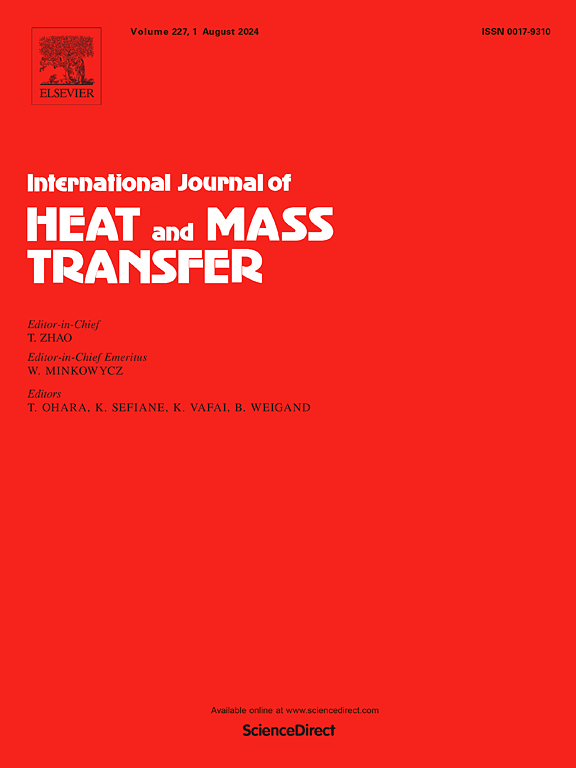Modelling of nucleate pool boiling on coated substrates using machine learning and empirical approaches
IF 5
2区 工程技术
Q1 ENGINEERING, MECHANICAL
International Journal of Heat and Mass Transfer
Pub Date : 2025-02-10
DOI:10.1016/j.ijheatmasstransfer.2025.126747
引用次数: 0
Abstract
Surface modification results in substantial improvement in pool boiling heat transfer. Thin film-coated and porous-coated substrates, through different materials and techniques, significantly boost heat transfer through increased nucleation due to the presence of micro-cavities on the surface. The existing models and empirical correlations for boiling on these coated surfaces are constrained by specific operating conditions and parameter ranges and are hence limited by their prediction accuracy. This study focuses on developing an accurate and reliable Machine Learning (ML) model by effectively capturing the actual relationship between the influencing variables. Various ML algorithms have been evaluated on the thin film-coated and porous-coated datasets amassed from different studies. The CatBoost model demonstrated the best prediction accuracy after cross-validation and hyperparameter tuning. For the optimized CatBoost model, SHAP analysis has been carried out to identify the prominent influencing parameters and interpret the impact of parameter variation on the target variable. This model interpretation clearly justifies the decisions behind the model predictions, making it a robust model for the prediction of nucleate boiling Heat Transfer Coefficient (HTC) on coated surfaces. Finally, the existing empirical correlations have been assessed, and new correlations have been proposed to predict the HTC on these surfaces with the inclusion of influential parameters identified through SHAP interpretation.
求助全文
约1分钟内获得全文
求助全文
来源期刊
CiteScore
10.30
自引率
13.50%
发文量
1319
审稿时长
41 days
期刊介绍:
International Journal of Heat and Mass Transfer is the vehicle for the exchange of basic ideas in heat and mass transfer between research workers and engineers throughout the world. It focuses on both analytical and experimental research, with an emphasis on contributions which increase the basic understanding of transfer processes and their application to engineering problems.
Topics include:
-New methods of measuring and/or correlating transport-property data
-Energy engineering
-Environmental applications of heat and/or mass transfer

 求助内容:
求助内容: 应助结果提醒方式:
应助结果提醒方式:


